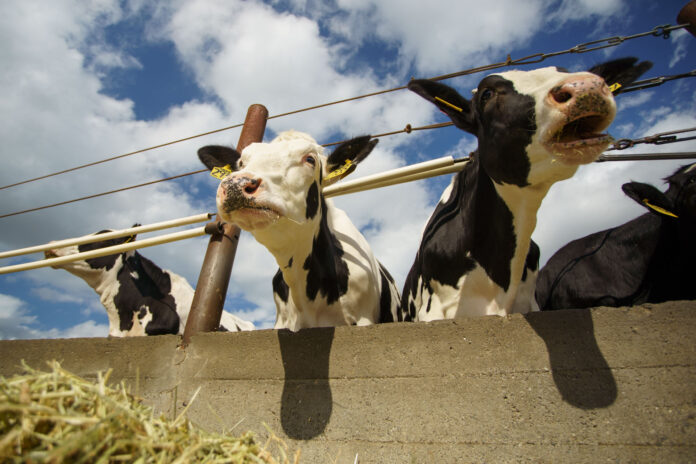UC Davis researchers analyzed environmental impacts of California dairy industry
The dairy industry has long been scrutinized for producing a large amount of emissions, according to a study published in the Journal of Dairy Science. Research from this study now offers new insights into the emissions from the California dairy industry, unveiling major improvements over the past 50 years.
UC Davis researchers analyzed the environmental impact and resource use of the California dairy industry and estimated the changes in greenhouse gas emissions and water and land use between 1964 and 2014. Data showed significant reduction in greenhouse gas emissions, water and land use.
“This may in turn remove/reduce the scrutiny and red-tape placed on CA dairy industry,” said Alexa Johnson, a doctoral student in animal and food sciences, via email.
Using Life Cycle Assessment Models, researchers kept track of the inputs used and emissions produced throughout the entire life of a dairy cow. The milk production system was separated into four sections — feed production, enteric methane produced by cattle, manure storage and farm management — for analysis.
“With this model, we can look at the system as a whole and identify areas which contribute most to emissions,” said Anna M. Naranjo, the first author of the study and a doctoral student in animal biology, via email.
To quantify the reduction in greenhouse gas emissions, researchers measured how much input and emissions are associated with the production of the same quantity and quality of milk between 1964 and 2014.
The carbon emissions produced by the dairy industry come from several sources: direct greenhouse gas emission from animal digestion, crop production and farming practices and use of water and land for feed production.
Data shows about a 50% reduction in direct greenhouse gas emissions in all farming-related activities, but the most notable reduction in greenhouse gas emissions, according to Ermias Kebreab, the associate dean of the college of agricultural and environmental sciences, comes from methane.
Of the components of greenhouse gas emissions in the dairy industry in California, methane makes up a large portion. Emissions from methane are produced during manure management and during the digestion process of cattles. The reduction in emissions from methane is due to better genetics, nutrition, cow comfort and farm management.
“Improved dairy nutrition utilizes feed by-products more efficiently to reduce food waste and increased knowledge of nutrition requirements per stage of lactation has also increased milk production,” Johnson said. “Improved management leads to happy cows, and happy cows make more milk.”
The reduction in greenhouse gas emissions has reduced dramatically, but the decrease in water and land use is even more remarkable.
“We saw an 88.1 – 89.9% reduction in blue water use (non-precipitation water) and an 89.4-89.7% reduction in land use in 2014 compared to 1964,” Naranjo said.
The large reduction in water and land use is because of improvements in crop genetics and better practices that enable higher yields of feed with the same amount of resource input.
The dairy industry has made remarkable efficiency gains in the past 50 years, according to Kebreab. Without these improvements, we would need 1.3 million more cows to support our dairy consumption today.
Despite the increasing demand for milk due to a growing population, researchers are optimistic about the future of the dairy industry, foreseeing a further drop in greenhouse gas emissions in the future.
“I do suspect that as the population continues to grow, so will demand for milk,” Naranjo said. “However, as we continue to improve milk production, it will take less resources and produce less emissions per unit of milk, which will lead us to lower total greenhouse gas emissions.”
Environmentally friendly changes that scientists are working on can help the dairy industry achieve further reductions in emissions, such as feeding cattle seaweed, according to Kebreab.
“The reduction in emissions we’ve seen is mainly due to efficiency gains,” Kebreab said. “Although this will continue, what we will see in the next few years is scientists finding solutions that target specifically at reducing emissions.”
Written by: Yantong Ye — science@theaggie.org




